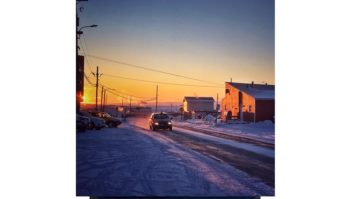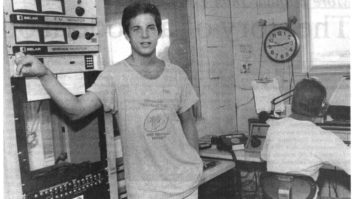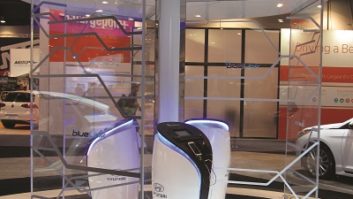BURLINGTON, Vt.
“Can I get regular FM on an HD radio?” “Why do I need to get a new radio? I already have very good radios.”
When Vermont Public Radio made the decision to begin broadcasting in HD, we sensed that it would probably be up to us to promote the new technology to our listeners and — more importantly in Vermont, which is not anywhere near the top 100 markets — to our local electronic retailers.
But VPR is accustomed to initial opposition to new ideas. When our first transmitter was put on the air more than 30 years ago the founders heard things like, “Are you just going to be broadcasting to cows?” or “What makes you think that you’ll ever find support for public radio in Vermont?”
Today with a network of eight full-time transmitters and several translators across the state, Web streaming and local support, VPR is a strong and viable statewide network, providing two distinct program services to most of the state.
Questions
When National Public Radio’s NPR Labs began championing HD-R multicasting, VPR realized that multicasting could be a big part of our strategy for getting additional services to our listeners while we continued to expand our second analog network across the state.
We also knew that as a public radio station, we had a staff already attuned to customer service, with the ability to bring the HD-R message to our listeners in a meaningful and effective way.
And so it was that almost a year ago, with assistance of the Corporation for Public Broadcasting, Vermont Public Radio embarked on converting what was then our six main transmitters across the state to HD Radio.
It was clear to us that we needed to find a way to answer listeners questions about IBOC, and at the same time effectively promote the new potential of HD Radio and in particular, multicasting.
And promote it we did — with on air spots, Web tiles, press releases and word of mouth. In an industry where naysayers predicted doom and gloom scenarios about consumer acceptance of HD Radio, we knew that as a station it was ultimately up to us to advocate effectively for IBOC, with listeners, and with retailers.
Demos and loaners
We launched our HD-R and multicast technology in late 2006; but even with extensive promotion on-air, in the local press and on our Web site, listener interest and acceptance of HD could be characterized as only “lukewarm” at best. Among listeners it wasn’t really perceived as an added value, and most local retailers had barely heard of HD-R.
But some questions did trickle in — and there were lots of misconceptions about what HD Radio was (“Can I get HD-R on my satellite radio?”) and frankly there was even some open hostility about a new service that required purchasing another piece of technology. Ironically, many of the people we talked to also had VCRs and DVD players at home.
As a listener-supported public radio station, we already had staff members whose job it is to periodically visit listeners and businesses; who talk to potential donors and underwriters every day to solicit their support and to explain our program offerings. We realized that it would be a relatively simple matter to outfit these employees with HD Radios to take with them to demonstrate HD and multicasting, and in come cases, to loan HD Radio receivers to listeners to try for themselves.
So we took advantage of the “broadcaster specials” offered by Ibiquity Digital and some early adopter sales by retailers; we purchased a few HD-R receivers to loan out to board members and curious listeners.
At the same time, we were making preparations to divide VPR into two distinct services: one which was to be primarily an all-news and information service, and the other a full-time classical music network. We had been doing extensive promotion about this upcoming change on air, on the Web and in our monthly e-newsletter. In addition, there were ads in the local press and a commentaries and letters to the editor about the proposed changes.
We also have an active community forum, composed of interested listeners who meet at various places across Vermont, to whom we promoted the change in format. In particular, we promoted our multicast channels on HD2, which currently carried VPR Classical, as an option for those listeners who were not going to be able to receive classical music on some of our VPR stations after the format change.
During the transition period before the full format change, we were broadcasting classical music 24/7 on three of our VPR stations across the state and for six hours during the mid-day, and overnight on our five stations that would be converted to news and information services. But it wasn’t until this switch was complete that listeners started to gain an active interest in HD Radio.
Two distinct services
During the first 60 days after the format change on Oct. 1, 2007, we received nearly 2,500 e-mails, calls and letters. “What happened to the classical music?”
About a quarter of the respondents were thrilled with the changes, another two-thirds were not happy with the changes for one reason or another.
Nearly 1,200 of the unhappy responses came from listeners who no longer had access to classical music on those VPR transmitters that had changed to the news and information format in areas of the state where a VPR Classical analog transmission was not also available. Out of those responses, nearly 300 mentioned HD Radio, so we knew the message had been heard.
But as we began answering the calls and e-mails, we realized that despite our best efforts, many people still did not have a good understanding of what HD Radio was and what multicasting could offer.
We began a targeted program of promotion and education to highlight the fact that the VPR Classical service was being offered on all of our HD2 stations and that it could provide the service those listeners were now missing.
Part of that involved a major giveaway during our successful pledge drive in November. Listeners were entered into three drawings in which a total of 30 HD Radios were given away.
We also negotiated a deal with receiver manufacturer Radiosophy to feature its low-cost HD 100 model at a discount on our Web site. This gave our listeners the opportunity to experience digital radio for well under $100. In the first month, VPR listeners had purchased nearly 350 HD Radio receivers from that Web promotion alone.
But with all of that effort, the place where the rubber hit the road was in our hands-on demos to listeners of the radios themselves. Through the various “broadcasters deals” made available by Ibiquity Digital, we acquired several more models of HD Radios for listener demos: a Sangean HDT-1 tuner, some RadioShack Accurian HD Radios, some Boston Acoustic Receptor HDs and some Radiosophy HD 100s. The “HD Road Warriors” were on the case!
The most challenging setup was the Sangean tuner, which was placed in a road case with an integrated amplifier speaker setup so that it could be easily transported. In addition, we acquired some Fanfare FM-2G whip antennas, and one of the Crane Reflect “super” dipoles.
As much as the industry doesn’t want to talk about it, HD Radio really benefits from a good external antenna. By comparison, when someone buys a satellite radio, it is made very clear to them that they need an external antenna, and that it has to have a clear view to the southern horizon.
We felt that not telling people up front that they might need an additional antenna for IBOC in some areas was misleading, so our HD-R Road Warriors were also outfitted with choices of auxiliary antennas, to be used where needed.
Mall installs
We also brought the full contingent of radios to VPR board meetings and to our community forum meetings across the state. We showed listeners how HD Radio worked and sounded, and explained the benefits of multicasting technology. This was supplemented by the work of our Road Warriors, who took HD radios into listeners’ homes and gave hands-on demonstrations of the new technology.
In the abstract, it’s hard to get across how revolutionary digital multicasting really is. But once people start to actually see and hear the units, they are excited about getting a radio as soon as they can.
In addition, our engineering staff helps local retailers in setting up antennas and getting retail staff familiar with our HD-R channels as well as the multicasting capabilities of the radios. It is sometimes an uphill battle; the malls often don’t allow retailers to install outside antennas; and in its current state, HD Radio really needs to have a good outside antenna in order to be workable inside these metal-enclosed spaces.
But once we have gotten the receivers working in the stores, the retailers report that the radios essentially sell themselves. At least in Vermont, retailers tell us they are now having trouble getting enough radios in stock to satisfy the demand.
VPR Engineering staff also recently lent their technical expertise in HD Radio receiver installations to a locally-owned and operated Christian Radio network. Christian Ministries in Essex, Vt., was installing a new HD-R system to broadcast a Christian rock music service, previously only available on the Internet, on its HD2 channel for their younger listeners.
VPR’s vision is that the greater the demand for HD Radios in our area, the better it will be for everyone in the market. It can help to convince retailers and manufacturers that a market does exist. Plus, when the kids go to school the parents might just tune in to VPR Classical on that HD Radio.
But beyond all the marketing and promotions of HD-R, we know that the key is the personal touch with our listeners. Our HD-R Road Warriors have many stories of grateful listeners who have seen IBOC for themselves, and who have made the jump to buy an HD-R receiver and have never looked back. And as we all know, ultimately it isn’t technology, it’s the content.
I think that given time, HD Radio will catch on with consumers and retailers alike. I’m old enough to remember going to my grandfather’s house and hearing him say in the evening, “Come on kids, the FM station is going to start broadcasting in stereo. Let’s turn on the multiplex tuner and listen for a while.” It took nearly 15 years for FM to really catch on with consumers and broadcasters, but it’s nearly ubiquitous now.
So, yes, it may take some more time for HD Radio to gain wide acceptance, but I don’t expect it will take 10–15 years. Meanwhile, here in Vermont we believe in the future of HD Radio, and in particular that “killer app” HD-R multicasting.
VPR is confident that IBOC will continue to be an important part of our future for a long time, so we are working hard to promote the fact that it enables us to super-serve our listeners with the programming choices they really want.
Rich Parker, GSEC, is director of engineering for Vermont Public Radio.
Tell RW about your own company’s experiences in implementing HD Radio, including strategies and listener reactions. E-mail to [email protected].












